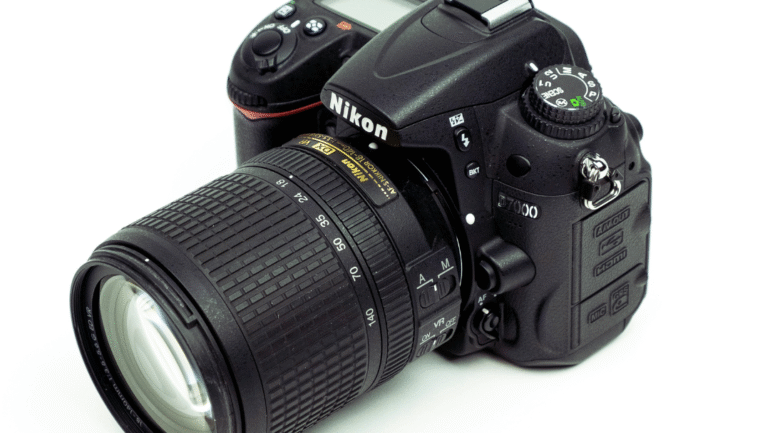Mirrorless cameras have revolutionized the world of photography by offering a compact alternative to traditional DSLRs without sacrificing performance. These cameras work by utilizing electronic viewfinders or LCD screens to display the image captured by their sensors, eliminating the need for a mechanical mirror. This design allows for lighter bodies and fewer moving parts, making mirrorless cameras increasingly popular among both amateur and professional photographers.
Unlike digital cameras with mirrors that reflect light through an optical viewfinder, mirrorless cameras provide real-time previews of shots. This feature enhances the shooting experience, allowing photographers to adjust settings and composition with immediate feedback. They typically boast faster autofocus and higher frame rates, making them suitable for capturing fast-moving subjects.
The advancements in mirrorless technology have led to improved image quality and video capabilities, appealing to a broad range of users. Whether in low-light conditions or during dynamic shoots, these cameras maintain their edge, proving that they are more than just a passing trend in the digital photography landscape.
Core Components and Functionality
Mirrorless cameras integrate several key components that contribute to their functionality. Understanding these components allows users to appreciate how they operate and the advantages they offer over traditional digital single-lens reflex (DSLR) cameras.
Image Sensor and Image Processing
The image sensor is a crucial component of mirrorless cameras. It captures light and converts it into an electronic signal that can be processed into a digital image. Common types of sensors include CMOS and CCD, with CMOS being the most prevalent due to its efficiency and lower power consumption.
Accompanying the sensor is the image processor, which handles the captured data. It enhances image quality, manages noise reduction, and processes color data. Advanced processors significantly improve camera performance, enabling faster shooting speeds and better low-light capabilities.
These components work together to ensure high-resolution images, rapid focusing, and quick performance across various shooting conditions.
Viewfinder: Electronic vs Optical
Mirrorless cameras employ an electronic viewfinder (EVF) instead of an optical viewfinder found in traditional SLR cameras. The EVF displays a digital feed from the image sensor, allowing users to preview exposure and effects in real-time. This feature provides a more accurate representation of the final image compared to an optical viewfinder, which relies on a separate optical path.
On the other hand, some users prefer optical viewfinders for their natural viewing experience and lower latency. The choice between an EVF and an optical viewfinder can significantly impact the shooting experience, so each photographer’s preference may vary based on their shooting style.
Interchangeable Lenses and Lens Selection
One of the standout features of mirrorless cameras is their interchangeable lens system. This flexibility allows photographers to select lenses that best suit their needs, from wide-angle to telephoto options.
Lens choice affects depth of field, image sharpness, and perspective. Key attributes include aperture size, focal length, and image stabilization. Popular brands often produce specialized lenses that enhance performance for specific situations, such as portrait or macro photography.
The ability to swap lenses enables users to adapt to various environments and subjects effectively. This versatility is a significant advantage for both amateur and professional photographers alike.
How Mirrorless Cameras Operate
Mirrorless cameras utilize innovative technology to provide exceptional performance and ease of use. Key aspects of their operation include autofocus systems, shutter mechanisms, video capabilities, and stabilization features, all of which contribute to their growing popularity.
Autofocus Systems
Mirrorless cameras typically employ advanced autofocus systems, crucial for achieving sharp images. Two common systems are phase detection and contrast detection.
- Phase Detection Autofocus: Utilized by many mirrorless models, this method allows for faster focusing by splitting incoming light into two images. This enables the camera to calculate the distance to the subject almost instantly.
- Dual Pixel Autofocus: This technology enhances autofocus accuracy and speed. Each pixel on the sensor can focus, making it effective for continuous tracking of moving subjects, which is a significant advantage during photography and videography.
Shutter Mechanism and Shooting Speed
Shutter mechanisms in mirrorless cameras can be electronic or mechanical. Electronic shutters contribute to silent operation and enable high-speed shooting.
- Shutter Speed: Mirrorless cameras often achieve faster shutter speeds, allowing for crisp images, particularly in high-action situations.
The absence of a mirror mechanism allows for quicker shooting speeds, with some models capturing up to 20 frames per second (fps). This is particularly beneficial for sports and wildlife photographers who need to capture fast-moving subjects.
Video and 4K Capabilities
Many mirrorless cameras offer robust video recording options, including 4K video capabilities. This feature allows videographers to capture stunning detail and clarity.
- Resolution and Frame Rates: Typical specifications include 4K at up to 60 fps, providing smooth motion video. Some models also support high dynamic range (HDR) video, enhancing the overall quality.
Other useful features include in-camera stabilization and advanced codecs for better post-production flexibility. This makes mirrorless cameras suitable for both amateur and professional filmmakers.
Stabilization and Camera Shake
Stabilization is a critical aspect for achieving steady shots, especially during video recording.
- Image Stabilization (IS): Many mirrorless systems include in-body image stabilization (IBIS). This technology compensates for small camera movements, reducing the risk of blurriness.
- Effectiveness: IBIS typically allows for several stops of stabilization, aiding in low-light conditions or during handheld shooting. Some lenses also offer optical stabilization, providing an added layer of support.
Together, these features enhance the overall user experience, ensuring consistently sharp imagery across a variety of shooting scenarios.
Comparing Mirrorless Cameras with DSLRs
Mirrorless cameras and DSLRs have distinct features that appeal to different types of photographers. Key differences include design, image quality, battery life, and compatibility with adapted lenses. This section explores these aspects in detail.
Design Differences and Size
Mirrorless cameras are typically more compact than DSLRs. Without the need for a mirror mechanism, they have a shorter back focus distance, allowing for smaller body designs. This characteristic makes mirrorless models lighter and easier to carry, appealing to photographers who prioritize portability.
In contrast, DSLRs are bulkier due to their optical viewfinder and mirror system. This additional size can enhance grip and handling for some users, especially with larger lenses. However, they may not be as convenient for travel.
Image Quality and Processor Performance
Both mirrorless cameras and DSLRs can deliver excellent image quality, but their performance can vary based on technology. Many modern mirrorless models utilize advanced image processors that enhance noise reduction and dynamic range in high ISO settings.
DSLRs traditionally rely on established technology with optical viewfinders providing clear, real-time images. However, newer DSLRs are catching up, incorporating features like live view and improved autofocus systems. Ultimately, image quality can hinge on the specific model rather than the type.
Battery Life and Usability
Battery life is another crucial difference. DSLRs generally offer longer shooting times per charge due to their optical viewfinder, which consumes less power. This is advantageous for extended shooting sessions, especially in remote locations.
Mirrorless cameras often struggle with battery life because their electronic viewfinders and displays consume more power. While many models are improving in efficiency, users may need to carry extra batteries for extended use. Therefore, battery considerations can impact the choice between these camera types.
Adapted Lenses Compatibility
Adapted lenses’ compatibility varies between mirrorless cameras and DSLRs. DSLRs have a long history of lens availability, supporting various brands and mounts due to their established systems. Photographers often find a wide selection of lenses for different shooting styles.
In contrast, while many mirrorless cameras allow for lens adapters, compatibility might not be as extensive. The shorter flange distance of mirrorless systems can enable the use of older lenses, but performance can vary. It’s essential for users to research specific combinations to ensure optimal results.
Popular Mirrorless Camera Models and Brands
Mirrorless cameras have gained significant traction due to their compact size and advanced technology. Various brands offer models that cater to different needs and budgets. Key players include Panasonic, Nikon, and Sony, each known for distinctive features and innovations.
Panasonic and Lumix G Series
Panasonic is a prominent player in the mirrorless market, especially with its Lumix G series. The Lumix GH5 is celebrated for its video capabilities, offering 4K recording and high frame rates. Its dual image stabilization system enhances shooting in various conditions.
The Lumix G85 features weather-sealing, making it suitable for outdoor photography. Equipped with a Micro Four Thirds sensor, it offers interchangeable lens options. This series is often favored by hybrid shooters who need both photo and video capabilities.
Nikon Z7 Features
The Nikon Z7 represents Nikon’s entry into the mirrorless arena. It boasts a full-frame sensor with 45.7 megapixels, which produces exceptional image quality. The camera incorporates in-body stabilization and a wide ISO range for better low-light performance.
Nikon has introduced a new lens mount, providing access to high-quality Z-series lenses. The Z7 includes dual memory card slots for added versatility during shoots. Its customizable settings help photographers adapt to various shooting environments effectively.
Sony Cameras Overview
Sony is widely recognized for its mirrorless technology, particularly the Alpha series. Models like the Sony A7 III are known for their balance of performance and value. The A7R IV offers industry-leading resolution with a 61-megapixel sensor.
Sony has invested in autofocus technology, featuring real-time tracking and eye autofocus. These features are particularly beneficial for portrait and wildlife photographers. Additionally, Sony’s lenses are designed to complement their camera systems, offering a wide range of options for users.
High-End Mirrorless Camera Developments
The high-end mirrorless camera segment continues to evolve, with brands introducing advanced features. Cameras in this category often include larger sensors, improved autofocus systems, and better connectivity options. Many of these models support professional-grade video capabilities alongside still photography.
Current trends point towards enhanced AI capabilities for image processing and subject detection. Brands are also focusing on ergonomics, ensuring that high-end models remain comfortable for prolonged use. These developments make high-end mirrorless cameras ideal for professionals seeking reliability and performance.




